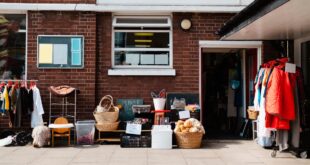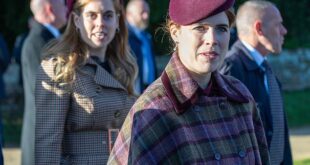An exhibit from the third floor of the Royal BC Museum.JONATHAN HAYWARD/The Canadian Press
The B.C. government has presented a business case for a new Royal BC Museum, which shows the $789.5-million cost of building a new museum on the current site in Victoria would be lower than repairing or upgrading the existing facilities. Replacing the museum on its current site was deemed the most effective option as the government moves to modernize the provincial museum – its structures and the stories it tells.
“I understand that this investment is a lot of money,” Culture Minister Melanie Mark told reporters in a media briefing. “But we will simply not kick this project down the road. We are not willing to take the risk of wiping out our culture, our collective history.”
The business case, released on Wednesday, shows $550-million for construction and an additional $239.5-million for other costs such as demolition, project management and insurance. That compares to 2018 estimates of $979-million to revitalize the current museum or $1.13-billion to make repairs – two options that were then dismissed.
It also lays out a timeline. The packing of some seven million artifacts is to begin this year, with the contents to be moved to temporary storage in Saanich, B.C. Archives will go to a new storage facility in Colwood, B.C. which is expected to be completed in 2025.
The timeline shows the removal of hazardous materials and demolition is set to begin in February of 2024 – several months before the next provincial election, which is scheduled to take place in October. BC Liberal Leader Kevin Falcon has said he would cancel the project, if elected.
Construction is estimated to take four years. The new museum is scheduled to open in 2030.
The plan was approved in March and announced publicly on May 13, to immediate and often intense public backlash. The cost has been criticized – especially at a time when many people are facing economic challenges – as has the museum’s eight-year closure.
“The announcement did not land as I had hoped,” Ms. Mark acknowledged to reporters. But she said she believes once people understand the information laid out in the plan there will be more support for the project to replace the 55-year-old museum.
“The building was built in 1967. It is at risk. I can’t underscore that enough. There is a cost to doing nothing,” she said.
BC Green Party MLA Adam Olsen said that despite being thankful to finally see a business case, it has been a public-relations disaster. “At a time when British Columbians are struggling with an affordability crisis, the government has chosen to build the most expensive museum ever constructed in Canada,” he said in a statement.
Mr. Falcon, in a statement called the new museum a tone-deaf vanity project and said the business case failed to justify “such an out-of-touch expenditure.”
The business case lays out the deficiencies of the current museum, including that it is seismically unsafe for visitors, staff, collections and exhibits. The building contains hazardous materials such as asbestos, lead, mercury and arsenic.
The document warns the museum faces significant flooding risk because of outdated local watermains, storm and sanitary lines that could fail during a seismic event or other natural disasters, such as last November’s flood. It cites the catastrophic fires at the National Museum of Brazil and the Notre Dame Cathedral in Paris.
It also says space and HVAC systems – key to attracting touring exhibitions – are inadequate. Currently, only 1 per cent of the museum’s collection can be displayed. The new facility is to have 26 per cent more space, although staff were unable to say how much of the collection will be able to be shown there.
Substandard loading bays and freight elevators have meant difficulty bringing touring exhibitions to Victoria. For instance, a Royal Ontario Museum whale exhibit was not able to travel to the RBCM because the blue whale’s skull could not fit into the elevator.
And when the RBCM brought in a dinosaur exhibition from New York’s Museum of Natural History, the front doors and second-floor glass panels had to be removed to get an artifact inside.
The building has also made some repatriation efforts more challenging – removing a totem pole, for instance. The new museum’s design will include ceremonial spaces and will be created with Indigenous collaboration.
Going back to 2018, five options were explored regarding what to do about the museum, ranging from the status quo to repairing or expanding the current museum, or building a new facility – either on site or elsewhere. The government team looked at 34 potential sites.
Along the way, they considered adding other elements to the project, including a hotel, office tower, street level shops and restaurants. Ultimately, these were deemed not core to the museum’s objectives. A child-care facility was also considered and ruled out.
Excellence in design will be critical to the project, officials stressed, saying they hope to attract international architectural interest. Three teams will be selected to compete.
Ms. Mark said that staff have been working on this proposal for five years and that the need to modernize the museum has been demonstrated and been made public.
The business case calls for other sources for funding, including philanthropic donations, but the amount expected is redacted from the document released to the public, along with other figures and information.
While Ms. Mark acknowledged the pandemic, inflation and other factors are creating financial challenges for British Columbians, she would not entertain the idea of people not getting onside with this project.
“In the end we’re going to have a state-of-the-art facility that is built for the 21st century.”
Ryan Hunt, executive director of the BC Museums Association, applauds the plan.
“This is an unprecedented investment in not only Victoria’s, but B.C’s cultural infrastructure. One that comes after many, many years of B.C. not prioritizing cultural investment. So I think it’s exciting news,” he said in an interview.
When asked about the criticism faced by the provincial government, Mr. Hunt said he thinks governments can do more than one thing at a time; they can make an investment in culture, while prioritizing pandemic recovery, affordable housing and access to health care.
“I’m an abundance thinker. And I really think it’s exciting that the government is prioritizing cultural spending, amidst all of the other needed spending that they’re attempting to prioritize.”
With a report from Xiao Xu
We have a weekly Western Canada newsletter written by our B.C. and Alberta bureau chiefs, providing a comprehensive package of the news you need to know about the region and its place in the issues facing Canada. Sign up today.
Source link


